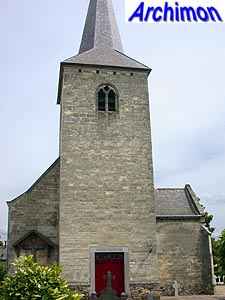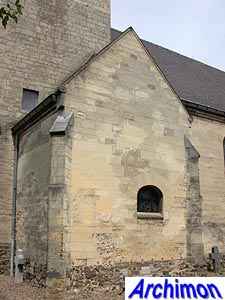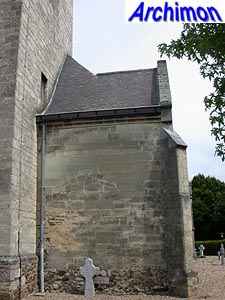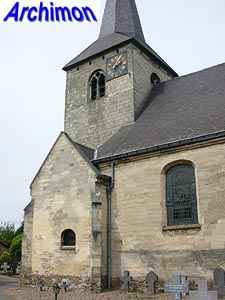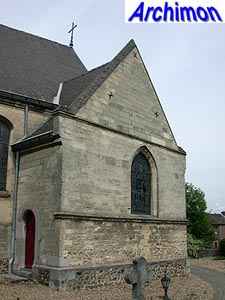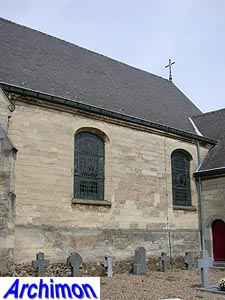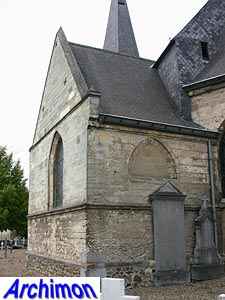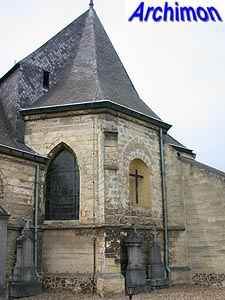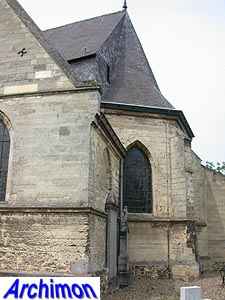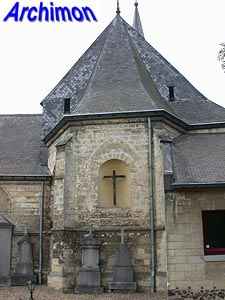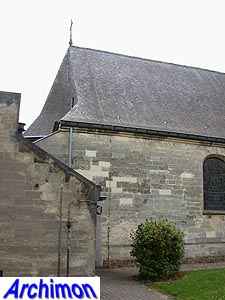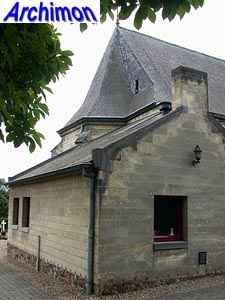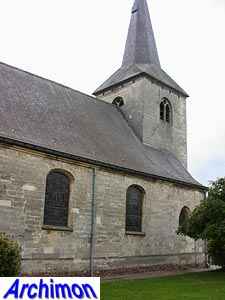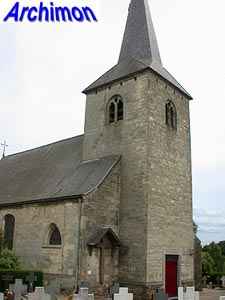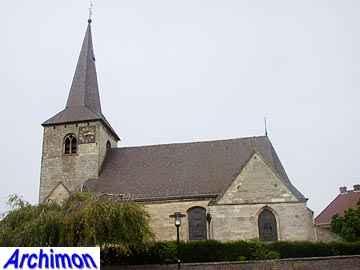 Sint
Geertruid was founded in the 11th century by settlers from Breust, nowadays a
part of Eijsden, some 5 kilometers to the west. Shortly after, a small wooden church was
built on top of a hill. Until well into the 18th century the village was also called Breust op de Berg (Breust
on the hill).
Sint
Geertruid was founded in the 11th century by settlers from Breust, nowadays a
part of Eijsden, some 5 kilometers to the west. Shortly after, a small wooden church was
built on top of a hill. Until well into the 18th century the village was also called Breust op de Berg (Breust
on the hill).
In the early 13th century the wooden church was replaced by a small basilica in Romanesque style that was built out of lumps of flint.
Until 1222 the people of Sint Geertruid still depended on the church of Breust
for the sacraments, but that year Sint Geertruid became a parish in its own
right. Around
the year 1300 a tower was added, also in Romanesque style. The bottom part of the
tower was made using irregular stones, the rest is marl. Only small fragments of
the original church remain; in ca. 1400 it was extended with the current Gothic
choir, also using marl. Followed this, the nave was largely demolished and
replaced by a new one, which turned the church into a pseudo-basilica with three
naves under a single roof. Only parts of the south wall remain inside the
church, as part of the arches between nave and the southern side-aisle.
In the 16th
century a tomb for the lords of Libeek was added to the south side, which
could be mistaken for a transept-arm and which is attached slightly
angled to the nave. In 1619 a portal was added to the south side of the tower. In
1700 the side-aisles were heightened and the roof was replaced by a higher one,
transforming the church into a hall-church, but with all three aisles still
under the same roof. New windows were made, in a style closely related to
Classicism. In 1838 a doorway was added to the front side of the tower, which
until then could only be accessed from within the church. The portal was now
made into a baptistry. The sacristy at the north side of the choir is probably a
more recent addition, possibly added during a restoration in 1926.
